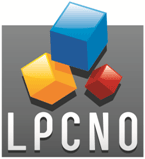Indium Phosphide Quantum Dots for Photocatalysis
NANOSCIENCE

Lab: LPCNO
Duration: NanoX master Internship (8 months part-time in-lab immersion)
Latest starting date: 08/11/2021
Localisation: "Nanostructures and Organometallic Chemistry" team of the LPCNO located in the INSA campus
Supervisors:
Céline NAYRAL cnayral@insa-toulouse.fr
Fabien DELPECH fdelpech@insa-toulouse.fr
Work package:
Thanks to their optical properties that vary with size, semiconductor nanocrystals (or quantum dots - QDs) have applications in various fields ranging from biomedical to microelectronics and photocatalysis [1,2]. However, these QDs are mainly composed of elements that are scarce and toxic, such as cadmium, lead, selenium or tellurium. The cost and the very negative environmental impact of these elements have stimulated the search for alternative materials that are more environmentally friendly. Among them, indium phosphide (InP) is focusing much attention because of the low toxicity of its constituent elements [3]. However, efficient and simple preparation methods are still lacking. For several years, the "Nanostructures and Organometallic Chemistry" team of the LPCNO has been studying and developing new ways to synthesize metal phosphide QDs, such as InP (see Figure), by organometallic chemistry methods [4].
This M2 project aims to develop photocatalytic materials based on InP QDs, in aerogel form or supported by eco-compatible porous matrices (mesoporous silica, polysaccharides, doped or undoped bio-sourced graphene), so as to promote the recovery of the catalyst for reuse and recycling. This work will be done in collaboration with the team "Functional Hybrid Materials" of the Euromed University of Fez which works on the synthesis and structuring (porosity, functionalization) of the heterogeneous solid matrices which will be used as supports.
In addition to their low toxicity, InP QDs have the ability to absorb over a wider range of wavelengths (UV-visible and near infrared) than the QDs developed more conventionally today. 2] The demonstration of the efficiency of the system will be carried out on two relevant target reactions in a context of sustainable development: the photodissociation of water (production of H2) and the formation of C-C bonds (alternative to processes involving rare metals). For these two reactions, proof of concept has recently been provided for InP-based QDs in solution[5] thus underlining the relevance of this approach. During this internship, the influence of the different parameters of the support (nature, pore size, specific surface, functionalization...) and of the QDs (nature, size, coating, surface ligands, type of grafting on the support...) on the catalytic performances will be studied.
This subject will allow the candidate to go from organometallic chemistry to the formation of heterogeneous nanostructures and their application in photocatalysis. It also offers the opportunity to become familiar with the techniques of synthesis and manipulation of air sensitive products (vacuum ramp, glove box) while approaching a wide range of characterization techniques: NMR and IR spectroscopies, X-ray powder diffraction as well as electron microscopies (TEM, HRTEM) specific to the study of nano-objects.
References:
[1] D.V. Talapin, J.-S. Lee, M.V. Kovalenko, E.V. Shevchenko, Chem. Rev. 2010, 110, 389. [2] M. J. Enright, K. Gilbert-Bass, H. Sarsito, B. M. Cossairt, Chem. Mater. 2019, 31, 2677-2682. [3] V. Brunetti, H. Chibli, R. Fiammengo, A. Galeone, M.A. Malvindi, G. Vecchio, R. Cingolani, J.L. Nadeau, P.P. Pompa, Nanoscale 2013, 5, 307.
[4] a) H. Virieux, M. Le Troedec, A. Cros-Gagneux, W.-S. Ojo, F. Delpech, C. Nayral, H. Martinez, B. Chaudret, J. Am. Chem. Soc., 2012, 132, 19701. c) E. A. Baquero, H. Virieux, R. A. Swain, A. Gillet, A. Cros-Gagneux, Y. Coppel, B. Chaudret, C. Nayral, F. Delpech. Chem. Mater. 2017, 29, 9623-9627. d) M. D. Tessier, E. A. Baquero, D. Dupont, V. Grigel, E. Bladt, S. Bals, Y. Coppel, Z. Hens, C. Nayral, F. Delpech Chem. Mater. 2018, 30, 6877−6883. [4] L.-M. Lacroix, F. Delpech, C. Nayral, S. Lachaize, B. Chaudret B. Interface Focus 2013, 3, 20120103.
[5] a) S. Yu, X.-B. Fan, X. Wang, J. Li, Q. Zhang, A. Xia, S. Wei, L.-Z. Wu, Y. Zhou, G.R. Patzke, Nat. Commun. 2018, 9, 4009. b) I. N. Chakraborty, S. Roy, G. Devatha, A. Rao, P. P. Pillai, Chem. Mater. 2019, 31, 2258-2262.
Areas of expertise:
nanoparticles, photocatalysis, synthesis, characterization, organometallic chemistry, surface chemistry
Required skills for the internship:
This subject will allow the candidate to go from organometallic chemistry to the formation of heterogeneous nanostructures and their application in photocatalysis. It also offers the opportunity to become familiar with the techniques of synthesis and manipulation of air sensitive products (vacuum ramp, glove box) while approaching a wide range of characterization techniques: NMR and IR spectroscopies, X-ray powder diffraction as well as electron microscopies (TEM, HRTEM) specific to the study of nano-objects.
